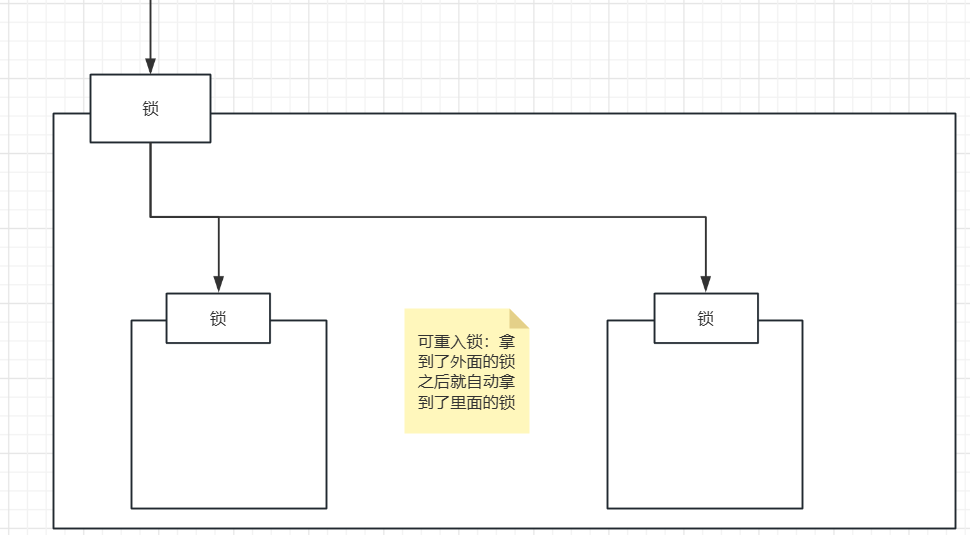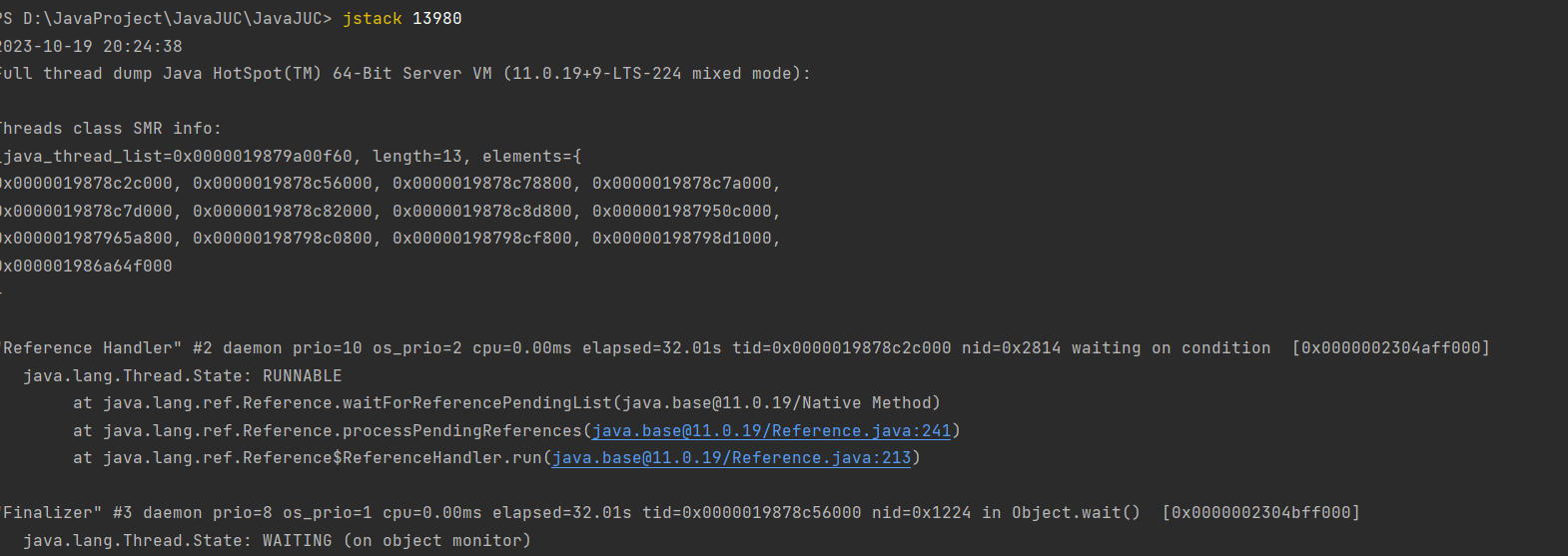JUC并发编程(终章)各种锁的理解
- 2023-12-08 06:15:26
- 阅读:37次
各种锁的理解
公平锁、非公平锁
公平锁:先到先得(不可插队)
非公平锁:达者为先(可插队)---------->默认
public ReentrantLock() {
//默认非公平锁
sync = new NonfairSync();
}
//重载的构造方法,通过fair控制是否公平
public ReentrantLock(boolean fair) {
sync = fair ? new FairSync() : new NonfairSync();
}
可重入锁(递归锁)
所有的锁都是可重入锁

Synchronized版
package org.example.lock;
public class Demo01 {
public static void main(String[] args) {
phone1 p1 = new phone1();
new Thread(()->{
p1.ems();
},"A").start();
new Thread(()->{
p1.ems();
},"B").start();
}
}
class phone1{
public synchronized void ems(){
System.out.println(Thread.currentThread().getName()+"---------->ems");
call();
}
public synchronized void call(){
System.out.println(Thread.currentThread().getName()+"---------->call");
}
}
ems方法中包含了call方法,所以当我们调用ems方法获取到锁时,也把call方法的synchronized锁获取到了。
错误理论
- 当线程A运行ems方法后运行call方法时ems锁释放,线程B可以获取到ems方法
正确理论
- 当线程A运行ems方法后运行call方法时ems方法的锁还未释放时就拿到了call方法中的锁,当call方法的锁释放后ems方法的锁才会释放。线程B此时就可以运行ems方法了
Lock版
package org.example.lock;
import java.util.concurrent.locks.Lock;
import java.util.concurrent.locks.ReentrantLock;
public class Demo02 {
public static void main(String[] args) {
phone2 p2 = new phone2();
new Thread(()->{
p2.ems();
},"A").start();
new Thread(()->{
p2.ems();
},"B").start();
}
}
class phone2{
Lock lock = new ReentrantLock();
public void ems(){
lock.lock();
try {
System.out.println(Thread.currentThread().getName()+"---------->ems");
call();
} catch (Exception e) {
e.printStackTrace();
} finally {
//等待call方法锁解锁后再解锁
lock.unlock();
}
}
public void call(){
lock.lock();
try {
System.out.println(Thread.currentThread().getName()+"---------->call");
} catch (Exception e) {
e.printStackTrace();
} finally {
lock.unlock();
}
}
}
自旋锁
spinlock(不断尝试直至成功)
已经见过了,就是unsafe中的自增getAndAddInt方法中的do-while循环就是一把自旋锁

自己写一把锁
package org.example.lock;
import java.util.concurrent.TimeUnit;
import java.util.concurrent.atomic.AtomicReference;
public class SpinLockDemo {
//int 0
//Thread null
public static AtomicReference<Thread> atomic = new AtomicReference<>();
public static void lock(){
Thread thread = Thread.currentThread();
System.out.println("===============>"+thread.getName()+"===========>lock");
//自旋锁,若线程等于null,则compareAndSet为true,加!就为false,就会一直循环
while (!atomic.compareAndSet(null,thread)){
}
}
public static void unlock(){
Thread thread = Thread.currentThread();
System.out.println("===============>"+thread.getName()+"===========>unlock");
//自旋锁
atomic.compareAndSet(thread,null);
}
public static void main(String[] args) throws InterruptedException {
new Thread(()->{
try {
lock();
TimeUnit.SECONDS.sleep(10);
} catch (Exception e) {
e.printStackTrace();
} finally {
unlock();
}
},"A").start();
TimeUnit.SECONDS.sleep(1);
new Thread(()->{
try {
lock();
TimeUnit.SECONDS.sleep(2);
} catch (Exception e) {
e.printStackTrace();
} finally {
unlock();
}
},"B").start();
}
}
死锁
死锁是什么

死锁测试
package org.example.lock;
import java.util.concurrent.TimeUnit;
public class DeadLockDemo {
public static void main(String[] args) {
String a = "A";
String b = "B";
new Thread(()->{new MyThread(a, b).run();},"A").start();
new Thread(()->{new MyThread(b, a).run();},"B").start();
}
}
class MyThread implements Runnable{
private String lockA;
private String lockB;
public MyThread(String lockA, String lockB) {
this.lockA = lockA;
this.lockB = lockB;
}
@Override
public void run() {
synchronized (lockA){
System.out.println(Thread.currentThread().getName()+"lock:"+lockA+"=>get"+lockB);
try {
TimeUnit.SECONDS.sleep(2);
} catch (InterruptedException e) {
throw new RuntimeException(e);
}
synchronized (lockB){
System.out.println(Thread.currentThread().getName()+"lock:"+lockB+"=>get"+lockA);
}
}
}
}
程序突然卡住死锁如何排查?
1、使用jps-l定位进程号

查看当前java活着的进程
2、使用jstack 进程号查看死锁问题


查找到一个死锁问题!
面试或者工作中排查问题:
1、查看异常
2、查看日志
3、查看堆栈信息


